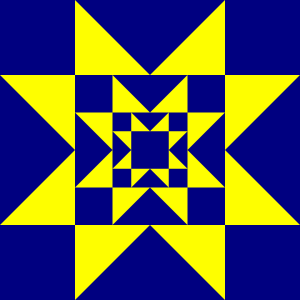Activity 1 – Map It.
Focus – I have explored how right angles can be measured in degrees and how this links to fractions and compass points.
Resources – Pencil and paper.
Discuss with your child a route they walk regularly (e.g. to the shop, on their way home from school). Draw the route showing the turns they make. Discuss aspects of the different routes they drew. How many of the turns are right angles? Which of these right angle turns are clockwise? How many left or right turns?
Bring maps to school to share and discuss too.
Activity 2 – Snake Pits.
Focus – I have explored how right angles can be measured in degrees and how this links to fractions and compass points.
Resources – Pencil and squared paper – one for child and one for adult (from school).
Parent and child draw several hazardous areas (snake pits) on their squared paper. They write instructions using turns and forward movements to trace a path between these hazards from Start (bottom left) to Finish (top right). Their path can either take the person on it to a snake pit – or safely to the Finish. Swap instructions and map and try
to work out whether each other’s path is safe or not.
Activity 3 – Design a Compass.
Focus – I have explored how to describe and make journeys using the eight compass points.
Resources – Pencil and Paper.
Work together to create a compass rose with an interesting design which clearly shows the eight compass points. Bring to school to display and share.
Activity 4 – Bedroom Paper.
Focus – I have explored how to describe and make journeys using the eight compass points.
Resources – Pencil and Paper.
Work together to draw a plan of their ideal bedroom. They should think about where they want the windows
and which direction they want them to face (south-facing windows will get most sun). They mark the eight compass points on their plan in the form of a compass rose.
Activity 5 – Co-ordinate Map.
Focus – I have explored the use of coordinates to plot points, and describe positions and movements on a grid.
Resources – Pencil and squared paper with coordinate grid (from school).
Working together use the squared paper to create a map of a park. This could be one you know well or an imaginary one. Write statements involving coordinates e.g. The roundabout is at (4, 2).
Activity 6 – Angles in Leaflets.
Focus – I have investigated how to estimate, create and measure angles – Classifying angles using knowledge of right angles.
Resources – Leaflets or adverts.
Collect some leaflets that have been delivered at home or look for adverts in a newspaper. Find angles in the
pictures and diagrams in the leaflets and use different colours to indicate acute, obtuse and reflex angles.
Activity 7 – Angles Game.
Focus – I have investigated how to estimate, create and measure angles – Classifying angles using knowledge of right angles.
Resources – Pencils and paper.
Draw two lines at random across a piece of paper and look at the angles that havemade created (including angles at the edge of the paper). Score one point for an acute angle, two points for an obtuse angle and three points for a right angle. Repeat, aiming for a higher score.
Activity 8 – Design Challenge
Focus – I have investigated how to estimate, create and measure angles – Estimating and measuring with degrees.
Resources – Pencils and squared paper (from school).
Work together to create a geometric design (e.g. for wallpaper or a plate). Estimate (guess) the size of some of
the angles on your design. Bring to school to measure the angles and compare these with your estimates. Discuss
and display designs.
Activity 9 – Practice Makes Perfect.
Focus – I have investigated how to estimate, create and measure angles – Creating and drawing angles.
Resources – Pencils and paper.
Work together to practise drawing these angles without using a protractor: 45°, 90°, 135°, 225°, 270° and 315°.
Back in class, measure the angles and score a point for every angle that is within 10°.
Activity 10 – Find the Angle.
Focus – I have investigated how to estimate, create and measure angles – Creating and drawing angles.
Resources – Paper.
Use the corner of a sheet of paper to check whether an angle is 90° or not on different objects around the house. Additional challenge – work out how to use a sheet of paper to measure angles of 45°. What about 135°? and find examples of these angles around the house.









